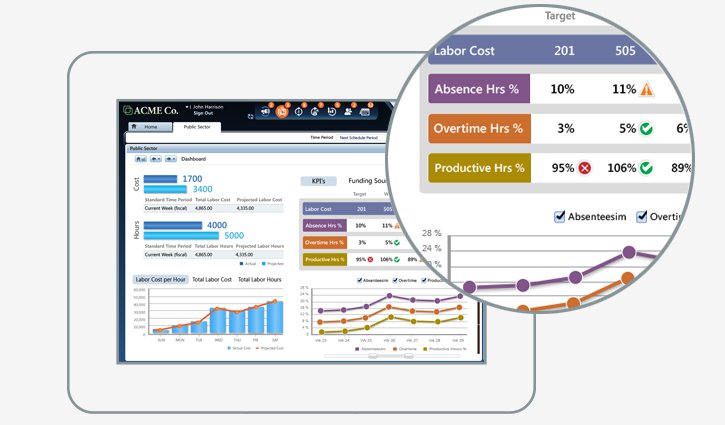

Merely saying the phrase Workforce Analytics conjures an image of suits in the C suite crunching mountains of data. Ouch, right? But when we talk about Kronos Workforce Analytics for Healthcare, we’re talking about people — specifically putting the right people with the right skills in the right work each day to maximize business outcomes.
Balance: Cost and Care
The healthcare industry has its own unique workforce challenges such as balancing diverse staffing needs with constantly fluctuating of patient demand. This means nursing and healthcare managers are tasked daily with getting the data they need to make accurate scheduling decisions.
As a healthcare provider, this is where Kronos Workforce Analytics is positioned to become your new best friend.
Workforce Analytics for Healthcare is designed to give nurse and healthcare leaders workforce insight that leads to fact-based decisions. With real-time data into shifts, overtime, and staff availability, managers can increase productivity, accountability, and build a culture of quality care and staff and patient satisfaction.
Also, having focused data can give managers facts (not hunches) into how absences might affect the delivery of quality care, what impact overtime could have on patient outcomes, and whether or not shift length is contributing to errors or negatively impacting patient safety — all significant considerations for healthcare professionals.
“To be as profitable and productive as possible in a healthcare environment, your first task is to manage your labor,” according to Bryan deSilva, managing director, Improvizations. “Without actionable data into your daily workflow, you are left to hunches. Workforce Analytics gives you a clear path to higher productivity which translates to quality and efficiency of care.”
Workforce Analytics Features
Accountability. Easy-to-configure dashboards for Workforce Analytics drive accountability and feature more than 200 healthcare-specific KPIs. With this functionality, managers can take staffing information and define accountability to optimize workflows to be as efficient as possible.

Insight. In-depth reports allow front-line managers to identify hidden trends and make fact-based decisions. This is especially helpful before the close of a financial period. Instead of waiting until the end of the month, managers can see data right away and make adjustments to hit productivity targets.
Cost control. Real-time visibility into schedules and timely workforce data reports can give managers the insight they need to reduce unplanned overtime and control costs.
Take Action on Trends
One of the most powerful features of Workforce Analytics is its ability to help managers spot trends and get ahead of high-risk workflow factors like under-staffing, overtime, unplanned absences, and frequent schedule edits that can have a domino effect across a department. More than just an HR report, Workforce Analytics is strategic data that (if taken advantage of to its full potential) can give managers clear insight as to what the next best steps in a process should be.
Overtime
The total premium hours used by the entire organization can be used to identify trends and patterns to determine how to plan staffing needs for the future. An example would be when hours begin rising during high patient demand periods. If extra headcount is not added and planned for it can affect the overall organizational structure and bottom-line.

Unplanned Absences
Unplanned absences have a significant effect on workforce data and patient care in the healthcare environment. The varying types of unplanned absences such as sick time, no call no show, extended leave, should be analyzed to determine the relationship between unplanned hours and regular hours. Using Workforce Analytics, the necessary data can be filtered by week, department, and sub-departments to spot trends, make personnel adjustments, and staff accordingly.
Schedule Edits
Identifying schedule edit trends allows an organization to see the number of edits made over a period of time by a supervisor. This data can help scheduling managers see which departments have a significantly higher volume of edits and which departments have more stable schedules. Using Workforce Analytics, managers can proactively help employees adjust their personal priorities to accommodate work schedules. This functionality also allows organizations to examine the reasons for any last-minute schedule changes, revealing if it is the result of a substandard practice or volatile labor demand.
Would you like to learn more about how Kronos Workforce Analytics can improve your workflow? Let’s talk today!





Comments